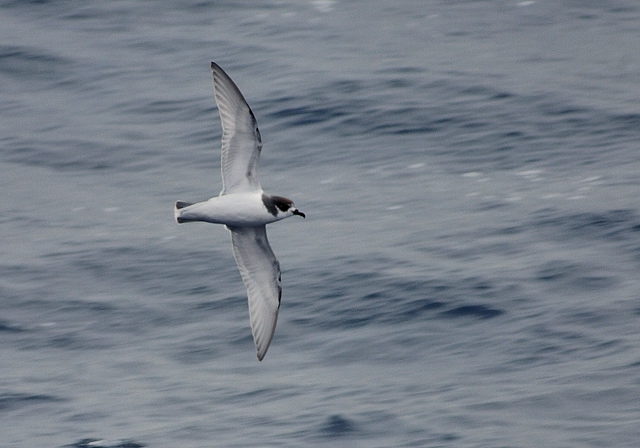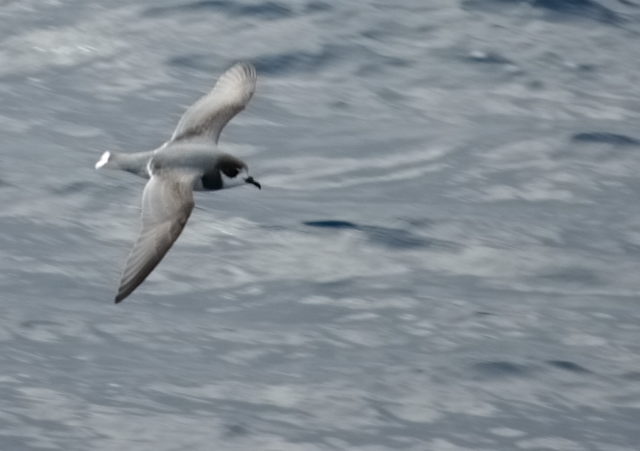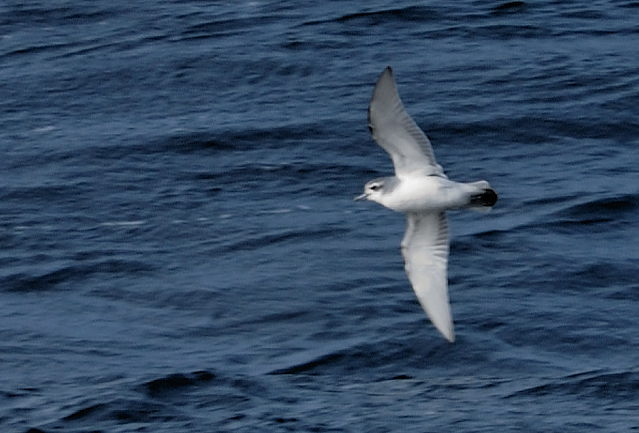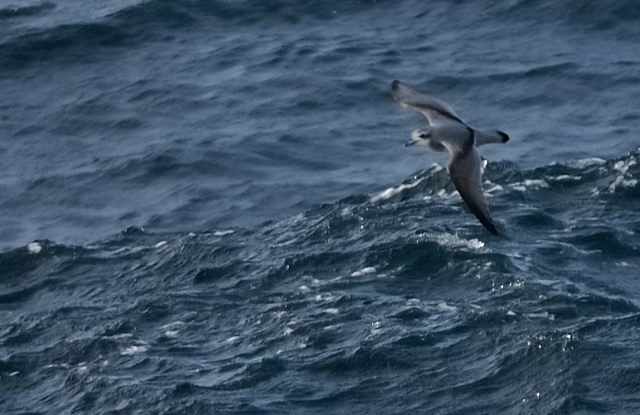Southern Fulmar
Posted: Tue May 22, 2012 9:41 am
019. Southern Fulmar (formerly known as Antarctic Fulmar) Fulmarus glacialoides Silwerstormvoël
Order: Procellariiformes. Family: Procellariidae
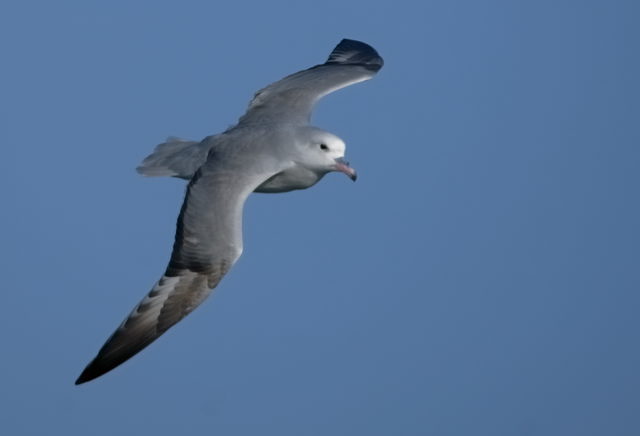
Description
A fairly large, bulky petrel, 45–50 cm long with a wingspan of 110–120 cm. Upperparts a pale silver-grey with black primaries and pale panels. The head is white with a pale grey crown. Underparts are white. The legs and feet are pale blue. The bill is pink with a black tip and dark bluish nostrils.
Distribution
Southern Oceans. The Southern Fulmar breeds along the coast of Antarctica and some outlying islands. Like other seabirds, Southern Fulmars are highly nomadic, and outside of the breeding season, this bird moves northwards away from the pack ice and usually stay below 40° South. Some individuals may be found as far north as the coasts of South Africa, Australia, New Zealand and South America, up to central Peru and southern Brazil.
In southern African waters it is uncommon to rare in the far south of the region, extending to the area west of the Northern Cape and southern Namibia.
Habitat
Pelagic.
Movements and migrations
Disperses from its breeding colonies in the period from March-April, migrating across the Antarctic Convergence before returning to breed in October.
Diet
Fish, Cephaolopods & carrion. It mainly eats fishery discards and offal, doing most of its foraging by grabbing food from the wake of fishing vessels.
Breeding
Does not breed in the sub-region.
The southern fulmar returns to its breeding grounds from October. Pairs tend to stay together each season, and upon arrival at the nesting site, which is reused from previous years, they engage in unusual courtship displays. The male and female perch side-by-side and call loudly, while waving their heads and preening together. A simple nest, which is no more than a pebble-lined scrape on a ledge or crevice with some shelter from the wind, is subsequently constructed and a single large, white egg is laid, usually in December. Both parents incubate the egg for around 46 to 47 days, taking turns in stints of one to nine days. Southern fulmars brood and guard their chicks after hatching for 14 to 20 days. The young birds fledge from the nest in March, around 50 to 52 days after hatching.
Call
A high pitched cackling.
Listen to Bird Call.
Status
Uncommon winter visitor to the Cape oceanic region, usually offshore. Classified as Least Concern (LC) on the IUCN Red List.
Order: Procellariiformes. Family: Procellariidae

Description
A fairly large, bulky petrel, 45–50 cm long with a wingspan of 110–120 cm. Upperparts a pale silver-grey with black primaries and pale panels. The head is white with a pale grey crown. Underparts are white. The legs and feet are pale blue. The bill is pink with a black tip and dark bluish nostrils.
Distribution
Southern Oceans. The Southern Fulmar breeds along the coast of Antarctica and some outlying islands. Like other seabirds, Southern Fulmars are highly nomadic, and outside of the breeding season, this bird moves northwards away from the pack ice and usually stay below 40° South. Some individuals may be found as far north as the coasts of South Africa, Australia, New Zealand and South America, up to central Peru and southern Brazil.
In southern African waters it is uncommon to rare in the far south of the region, extending to the area west of the Northern Cape and southern Namibia.
Habitat
Pelagic.
Movements and migrations
Disperses from its breeding colonies in the period from March-April, migrating across the Antarctic Convergence before returning to breed in October.
Diet
Fish, Cephaolopods & carrion. It mainly eats fishery discards and offal, doing most of its foraging by grabbing food from the wake of fishing vessels.
Breeding
Does not breed in the sub-region.
The southern fulmar returns to its breeding grounds from October. Pairs tend to stay together each season, and upon arrival at the nesting site, which is reused from previous years, they engage in unusual courtship displays. The male and female perch side-by-side and call loudly, while waving their heads and preening together. A simple nest, which is no more than a pebble-lined scrape on a ledge or crevice with some shelter from the wind, is subsequently constructed and a single large, white egg is laid, usually in December. Both parents incubate the egg for around 46 to 47 days, taking turns in stints of one to nine days. Southern fulmars brood and guard their chicks after hatching for 14 to 20 days. The young birds fledge from the nest in March, around 50 to 52 days after hatching.
Call
A high pitched cackling.
Listen to Bird Call.
Status
Uncommon winter visitor to the Cape oceanic region, usually offshore. Classified as Least Concern (LC) on the IUCN Red List.
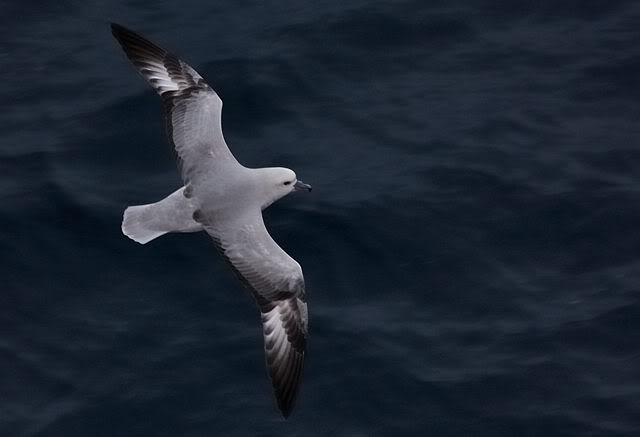
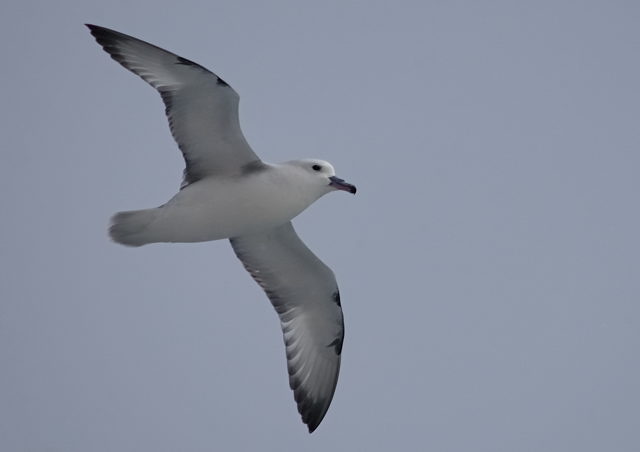

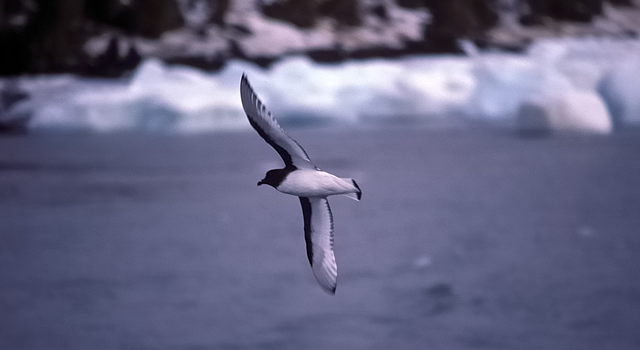

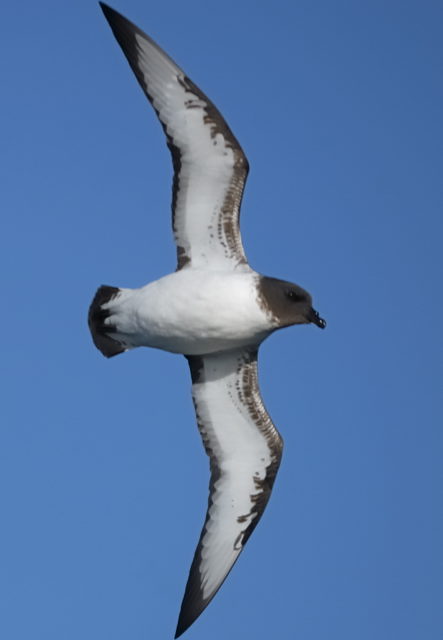
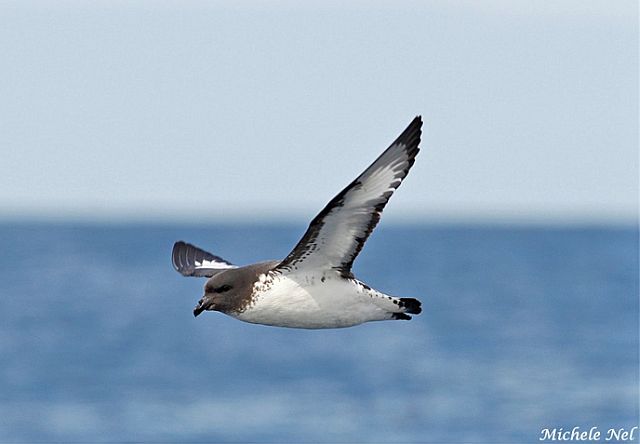 © Michele Nel
© Michele Nel